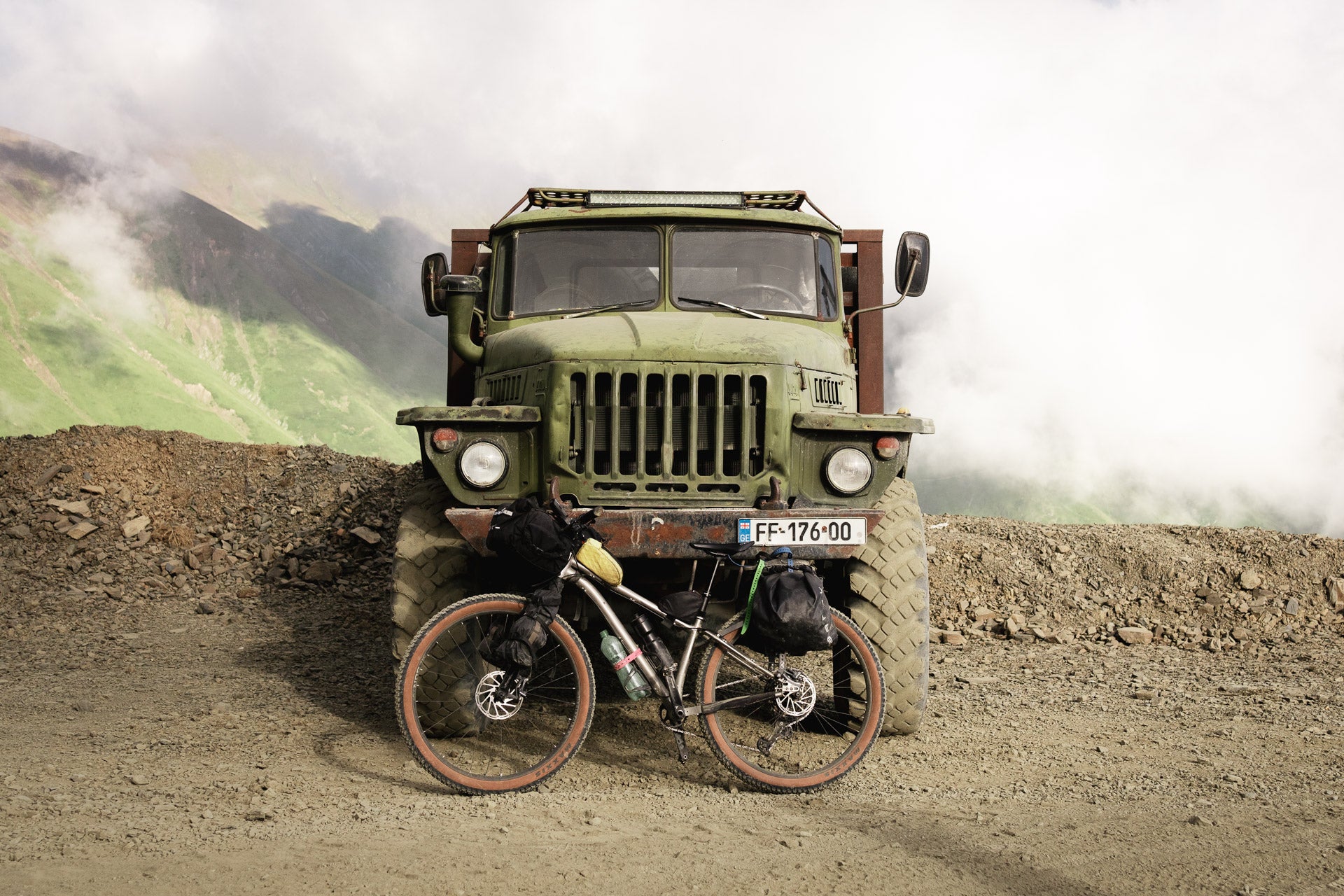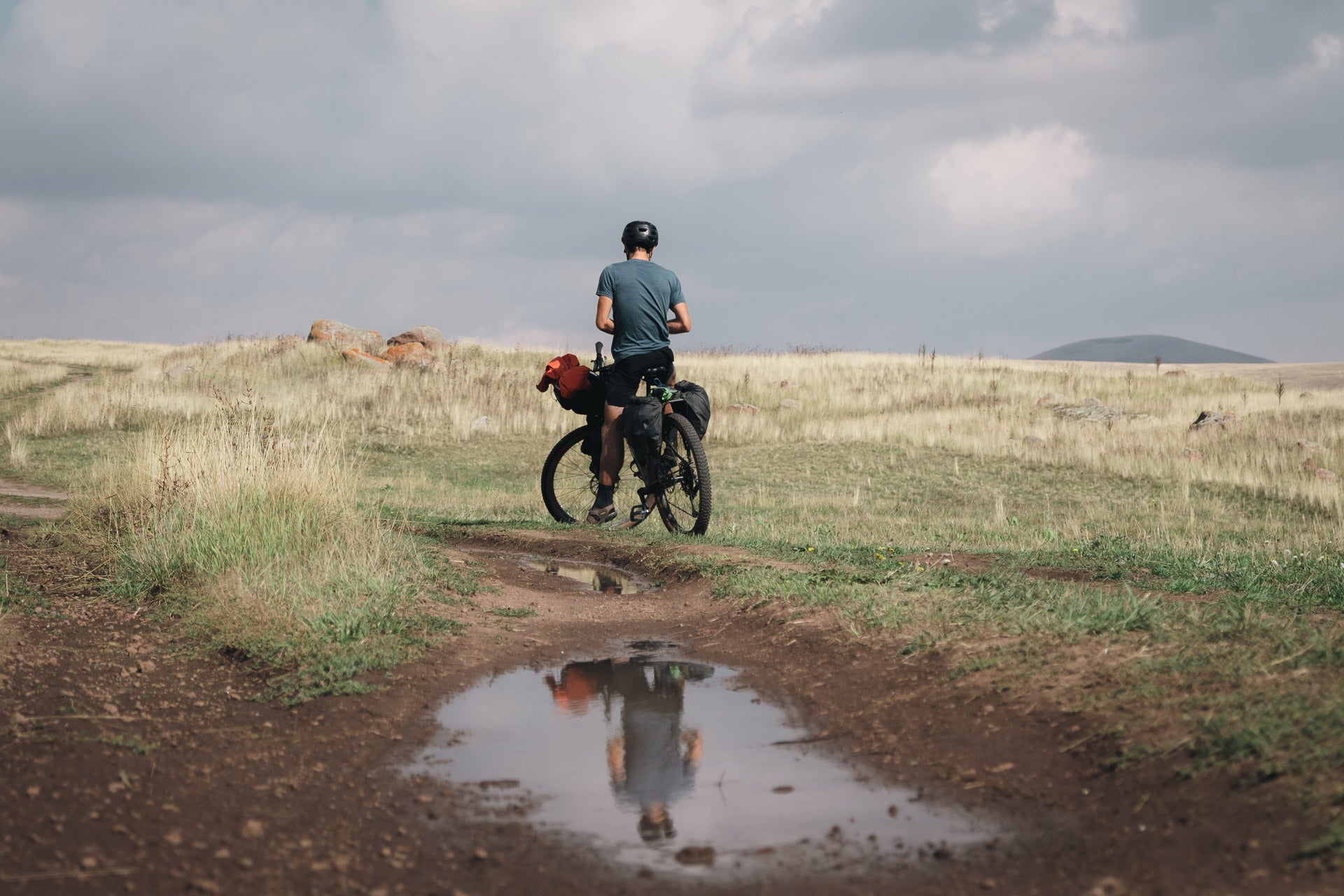
Crossing Georgia and Armenia by bike
During the summer of 2024, our ambassador Louise Philipovitch and her partner Justin Roy-Brousseau set off on a two-month bikepacking journey through Georgia and Armenia, traversing the Caucasus mountain range. Here’s a look back at their experience.
Words & photos : @louise_philipovitch (photos featuring Louise by Justin Roy-Brousseau)
It was when I started talking about our trip while we were getting ready for the adventure that I realized just how little Georgia and Armenia are known in Quebec. Almost systematically, when I mentioned Georgia, people would respond, “Oh, so you’re going to Georgia, US?” It’s understandable: this tiny country of fewer than four million inhabitants, located at the crossroads of Europe and Asia, can seem quite distant from our Belle Province.
Yet, much like Armenia, this country, with its ancient traditions and sometimes considered the cradle of civilization, is also a well-known destination for mountain biking and bikepacking.


Georgia and Armenia had been on my mind since reading Au détour du Caucase by Clara Arnaud, in which the author tells the story of her journey on foot across Georgia and Armenia, accompanied by her horse. That book left a deep impression on me: the descriptions of those majestic mountains had me daydreaming, but it was above all the history of these lands that captivated me—a history of torn peoples, shifting borders, and deep geopolitical conflicts over territories disputed by powerful neighboring nations like Russia and Turkey.
I knew I wanted to go, and after doing some research online, I came across a route created by BIKEPACKING.com that went through the exact regions I was eager to visit. The photos accompanying the route description sealed the deal for Justin and me; we bought our plane tickets and started preparing for our adventure.
We decided to give ourselves plenty of time to explore the region, planning a two-and-a-half-month trip. As for our bikes, Justin chose the Boreal Pinion because he wanted a sturdy and comfortable bike suited for rough terrain and significant elevation gain. Most importantly, he wanted to try the Pinion system and no longer worry about a broken derailleur or a worn-out chain. As for me, I went with the Torngat Ti—the fat bike I had ridden that winter—which could easily be converted into an MTB by swapping out the wheels, tires, and bottom bracket. Neither of us had a front suspension, and we didn’t regret making that choice: we each had 29”x2.6” tires, offering great versatility and enough comfort to fully enjoy the long singletrack descents.


When we arrived in late July 2024, we were immediately immersed in the local atmosphere: a very rural way of life, with free-roaming pigs crossing the road around every turn, and a strong influence from the Soviet era (both countries were part of the ex-USSR), evident in the Russian military trucks and the old Ladas—the iconic Soviet cars of the 1970s.
We took inspiration from BIKEPACKING.com's Caucasus Crossing route, adapting it to explore more remote mountains and valleys. The elevation gain in this region is brutal - this is no joke! While the mountains are certainly high, the real challenge comes from the way the roads have—or haven’t—been developed. Historically, travel in these areas was done on horseback or foot, and outside of the main roads running through the valleys, there are only a few alternatives for crossing mountain passes. Often, the only way up is a steep singletrack—essentially a horse trail used by shepherds and hikers—sometimes requiring two full days of hike-a-bike. This was the case in Tusheti, where we crossed the infamous Atsunta Pass at 3,510 meters of elevation.
That said, road infrastructure has been developing in recent years, leading me to think that many of the gravel paths we rode will likely be paved within the next five to ten years.


One of the most memorable aspects of our trip was getting to meet the many shepherds who spend their summers in the mountains with their flocks. As soon as they saw us, they would invite us to share a drink and offer us everything they had: homemade sheep cheese, bread, fresh vegetables brought up from the valleys, all accompanied by cha-cha—a homemade Georgian spirit—or "vodka," the Armenian shepherds’ homemade alcohol, fermented from wild berries gathered in the mountains. Let’s just say that riding in a straight line wasn’t always easy after these celebrations!
These two small countries, whose combined population is still smaller than that of Quebec alone, left a profound impact on us. It was a unique cultural experience that gave us deeper insight into the region and its geopolitical tensions, while also giving us the chance to experience the incredible generosity of its people up close.













